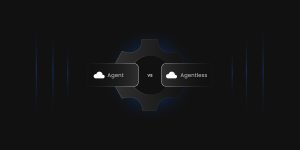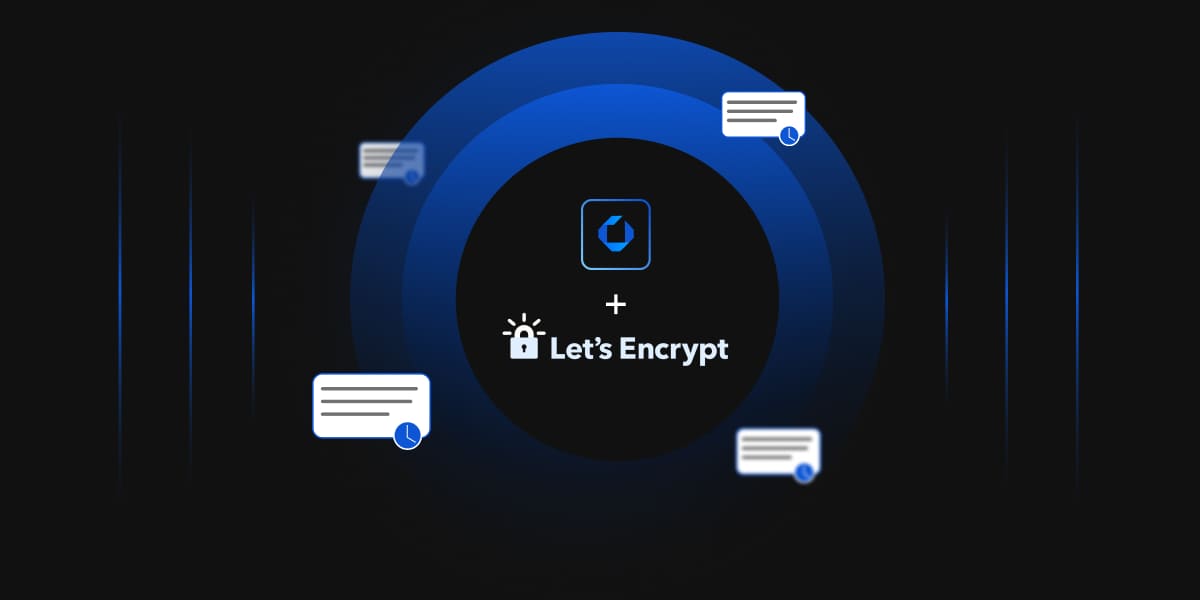Effective Certificate Lifecycle Management (CLM) is crucial for modern digital security. When implementing a CLM solution, a key decision is choosing between agent-based and agentless architectures, which impacts deployment, operations, and scalability.
Agent-Based CLM Deployments
An agent-based architecture involves installing a lightweight software component (agent) directly on each endpoint (e.g., servers, devices, VMs) requiring certificate management. These agents communicate with a central CLM platform, performing tasks like scanning, CSR generation, and automated installation locally.
Key Advantages
- Granular Control & Deep Visibility: Agents offer fine-grained control and access to local configurations, enabling proactive issue resolution.
- Real-Time Monitoring: Continuous, real-time monitoring allows for immediate detection and remediation of certificate issues.
- Complex Environment Support: Ideal for diverse OS, legacy systems, or air-gapped networks.
- Enhanced Security: Provides endpoint-level security features like encrypted local private key storage.
- Cross-Network Capabilities: Agents can manage devices in segmented networks by initiating outbound connections.
- Automation: Automates processes directly on devices, reducing manual intervention.
Disadvantages & Considerations
- Deployment & Maintenance Overhead: Significant effort for installation, configuration, and ongoing updates across many endpoints.
- Resource Consumption: Agents consume CPU, memory, and disk space on endpoints.
- Change Management: Requires robust change management for rollouts and updates.
Agentless CLM Deployments
An agentless architecture eliminates endpoint software installation. A centralized CLM platform interacts remotely using existing network protocols, APIs, or standard certificate management protocols.
Key Advantages
- Simplified Deployment & Scalability: No endpoint software reduces complexity, making it easy to deploy and scale in dynamic environments.
- Reduced Overhead & Cost Efficiency: Lower operational costs due to no agent development, deployment, or updates.
- Minimal Endpoint Resource Usage: All CLM tasks are performed on the central server, freeing endpoint resources.
- Broader Environment Support: Compatible with various platforms, including network appliances, IoT devices, and cloud infrastructure.
- Rapid Implementation: Beneficial for immediate deployment or environments with agent installation restrictions.
- Enhanced Automation: Centralizes and automates all certificate lifecycle processes.
Disadvantages & Considerations
- Limited Granularity: May offer less deep insight into highly specific local certificate stores compared to agents.
- Network Dependencies: Relies heavily on robust network connectivity and proper firewall rules.
- Security Risks: Potential for credential compromise or unauthorized access if not rigorously secured.
- Complexity of Remote Access: Configuring access permissions and protocol settings for diverse endpoints can be intricate.
Hybrid Approaches: The Best of Both Worlds
Many large enterprises have a mix of legacy and modern infrastructure, making a purely agent-based or agentless approach impractical. A hybrid CLM deployment combines both models.
How Does It Work?
- Strategic Deployment: Agents are deployed for critical, sensitive, or hard-to-reach systems needing deep visibility and real-time control.
- Agentless for Scale: Agentless capabilities manage scalable, dynamic environments like cloud resources, Kubernetes clusters, and network devices.
- Unified Platform: An ideal CLM solution supports both models from a single, centralized platform for holistic visibility.
Making the Right Choice: Key Decision Factors
The best choice for your CLM deployment hinges on your organization’s unique infrastructure, security posture, and operational goals.
Infrastructure Landscape
Your environment’s diversity is crucial. Highly heterogeneous setups, encompassing various operating systems and device types, often benefit from a hybrid approach or a robust agentless solution capable of broad protocol support. For large, dynamic, and modern environments, such as those with ephemeral containers, rapidly scaling cloud instances, or extensive cloud-native deployments, agentless solutions are typically favored due to their inherent agility and ease of management at scale.
Conversely, for large, complex, and traditional environments with legacy systems, diverse on-premises configurations, or highly specialized hardware, agent-based solutions often provide the necessary deep visibility and granular control. Don’t forget your network topologies; firewall rules, segmentation, and available bandwidth heavily influence the practicality and performance of remote access for agentless solutions.
Security Posture & Compliance
Consider your organization’s risk tolerance regarding agent deployment (potential endpoint compromise if not properly secured) versus remote access risks (credential management, network exposure). Evaluate how each CLM model contributes to detailed audit trails and helps meet compliance requirements. Also, assess the importance of enforcing consistent certificate policies directly at the endpoint level, which agents are often better equipped to do, especially for local key protection.
Operational Considerations
Think about how well the CLM solution integrates with your existing tools like ITSM, SIEM, CMDB, and orchestration platforms; seamless integration reduces friction. Evaluate your team’s skillset and available resources—are they more adept at managing agents or configuring network settings and APIs for agentless solutions? Budget is another factor, but look beyond just licensing costs to the total cost of ownership, including operational overhead and maintenance. Finally, assess any potential performance overhead an agent might introduce on critical systems.
Future-Proofing
Your CLM choice should align with your long-term strategy. If you’re embracing cloud adoption, select a solution that adapts seamlessly to hybrid and multi-cloud environments. For organizations with high DevOps/DevSecOps maturity, ensure the CLM solution integrates smoothly into CI/CD pipelines for automated and programmable certificate provisioning in fast-paced development cycles.
Key Differences: Agent-Based Vs. Agentless
| Feature | Agent-Based | Agentless |
|---|---|---|
| Setup Complexity | Requires installation on every endpoint; potential reboots. | Centralized and straightforward; no endpoint software needed. |
| Control Granularity | Device-level control; deep insight into local stores; proactive fixes. | Relies on native endpoint capabilities (SSH, APIs); less insight into local application configurations. |
| Compatibility | Suitable for diverse environments, but requires specific agent versions per OS. | Leverages standard protocols; certified integrations |
| Scalability | Complex to scale due to per-endpoint installation and maintenance. | Highly scalable; ideal for dynamic, ephemeral environments. |
| Security | Encrypted local storage; endpoint-level policy enforcement. An agent can be a target. | Depends on device-native protocols and secure credential management. Focus on central platform security. |
| Maintenance | Ongoing agent updates, patching, and configuration changes required. | Minimal; primarily managing the central CLM platform and integrations. |
| Network Dependencies | Can operate disconnected for periods; agents initiate outbound connections. | Highly dependent on network connectivity, routing, and firewall rules for inbound access. |
| Resource Consumption | Agents share resources (CPU, memory, disk) on endpoints, potentially impacting performance. | No local resource consumption on endpoints; all CLM tasks on the central server. |
| Service Account Management | Needs separate account management/credentials for each agent; complex at scale. | Simplified through centralized credential rotation. |
How Can Encryption Consulting Help?
Encryption Consulting, through its CertSecure Manager CLM solution, effectively addresses the agent vs. agentless dilemma by providing a flexible and unified platform. This allows organizations to leverage agentless capabilities for modern, dynamic environments like cloud-native setups and DevOps. Simultaneously, CertSecure Manager supports agent-based deployments for complex, legacy on-premises systems or highly segmented networks, providing the granular control, deep visibility, and local key protection essential for these specific needs. This comprehensive hybrid approach ensures seamless, automated CLM across an entire, diverse IT landscape from a single pane of glass, optimizing both security and operational efficiency.
Conclusion
There’s no single “correct” answer for CLM deployment. Agent-based offers robust control and deep visibility, while agentless provides simplicity, scalability, and cost efficiency. For most enterprises, a hybrid approach will be the most effective, leveraging the strengths of both.
The ultimate goal is robust automation and comprehensive visibility over your entire certificate landscape. By carefully evaluating your environment and choosing a CLM solution with flexible deployment, you build a resilient, proactive security posture against certificate-related outages, compliance failures, and breaches.




